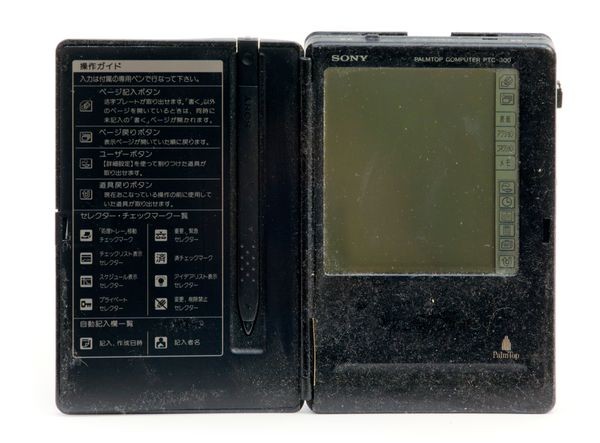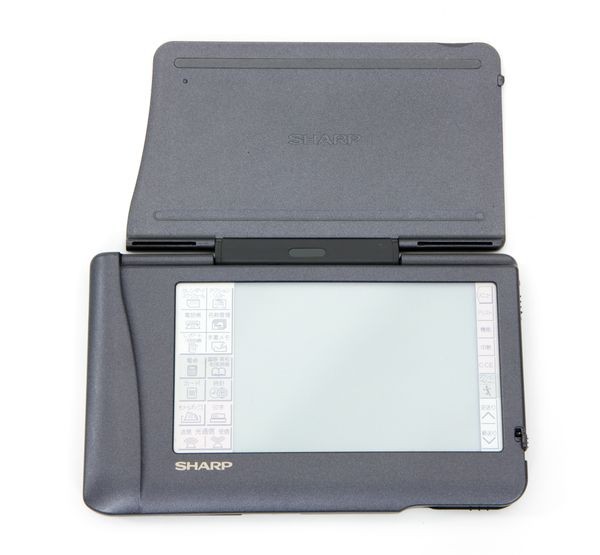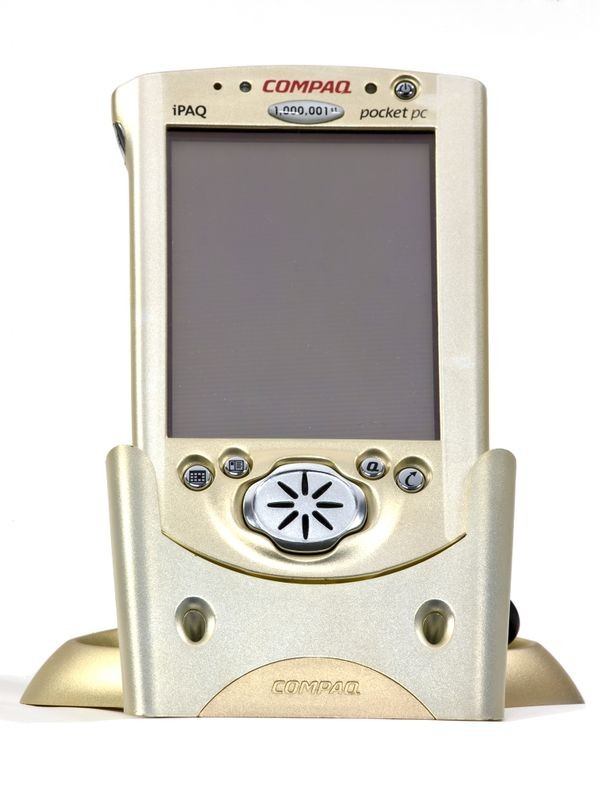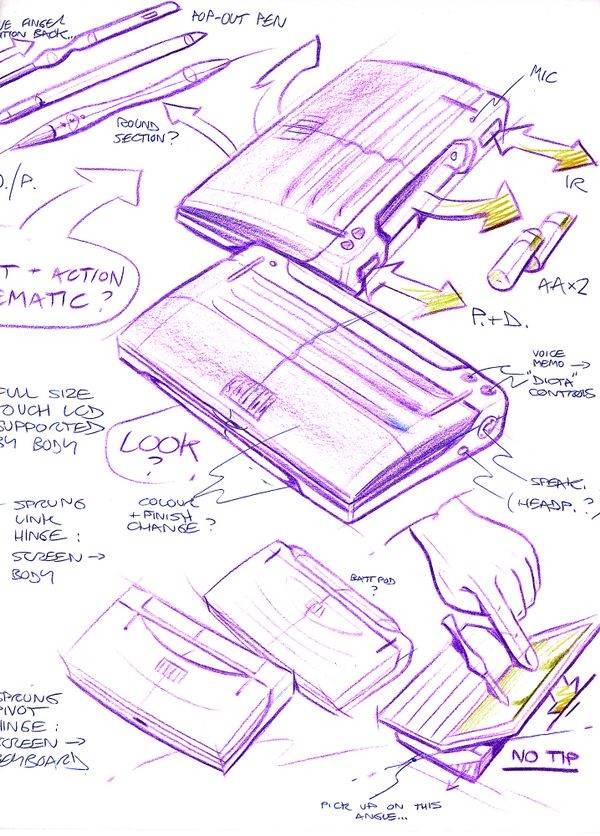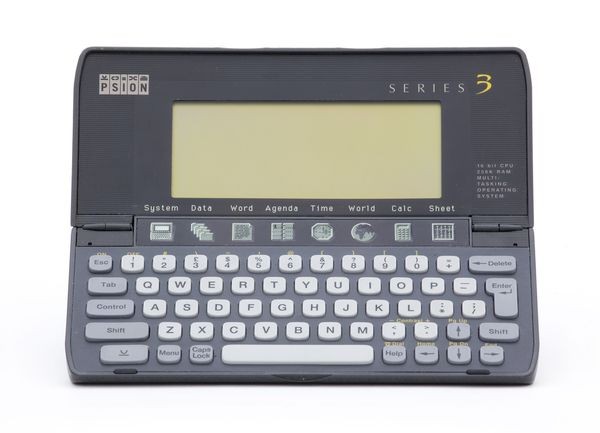Handhelds Branch Out
In Sync: Amstrad PenPad
Like the later PalmPilot, the pen-based PenPad offered synchronization. When you plugged it into your PC, software would check that changes to the address book, for example, were updated on both machines.
Handhelds Branch Out
The pen computing revolution failed, but it left an important legacy. In the quest for pen-based computers, many engineers rethought portable computing more broadly, developing new hardware running versatile mobile operating systems such as GO’s PenPoint and the Newton OS.
These platforms—a combination of hardware and operating system for which a developer could write applications software—were general-purpose, much like those developed for PCs. This opened the door to handhelds becoming full-function computers with sophisticated graphics, making possible uses that range from web browsing to electronic banking.
Sony PalmTop PTC-300
The Sony PalmTop featured a pen-based graphical user interface with handwriting recognition. Sold only in Japan, it inspired Palm's leaders.
View Artifact DetailHP Jornada 928 digital assistant
This sleek, full color handheld computer saved the world in the James Bond film, “The World is Not Enough.” HP’s popular Jornada line ranged from pocket computers to subnotebooks, and even a phone, all running Windows CE.
View Artifact DetailZaurus PI-3000
The Zaurus was a successful follow up to Sharp’s Wizard series, which had inspired the Newton. Based on a proprietary operating system, the Zaurus became Japan’s most popular handheld. Later models featured wireless networking.
View Artifact DetailCompaq IPAQ 3650
The Compaq IPAQ was one of the best-known handhelds running Windows CE, Microsoft’s first serious mobile operating system.
View Artifact DetailPsion: A Different Path
English physicist David Potter and graduate student Charles Davies launched Psion as a software company. Their 1984 Organizer turned Psion into the first successful handheld computer company.
Most Europeans didn’t own PCs, so a Psion was often its owner’s only computer. Psion’s platform later became Symbian, and ran half the world’s smartphones.
Psion design sketch
This sketch is by Martin Riddiford, the designer of all the Psion products. Rather than become an employee, he set up his own design firm with Psion’s help.
View Artifact DetailPsion Series 3 Organizer
A full-function miniature computer with a graphical user interface, the Series 3 sold about 1.5 million units. It had an advanced multitasking memory-protected operating system. There was no series 4, a number considered unlucky in Asia.
View Artifact Detail
